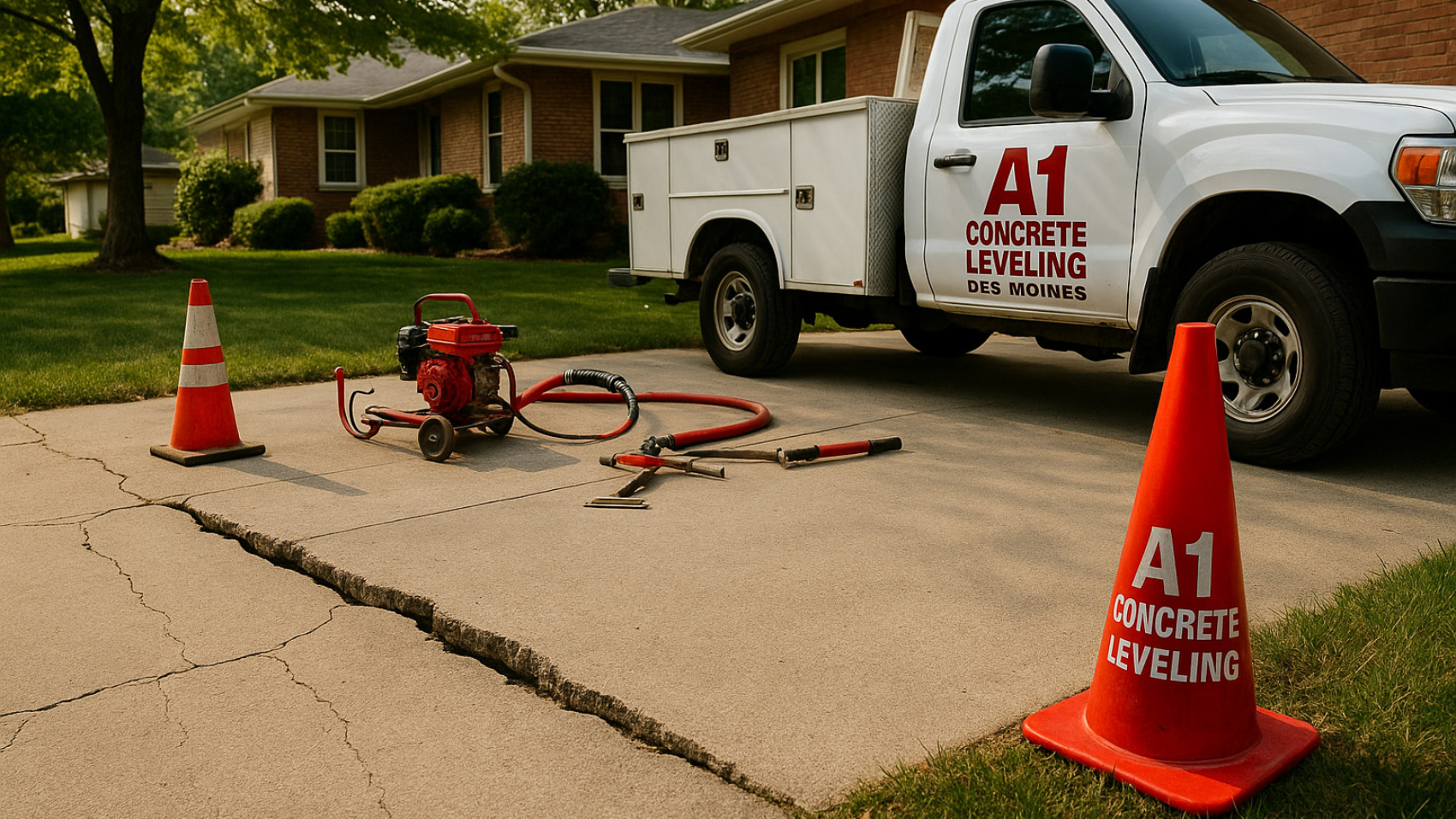Concrete leveling is a game-changer for uneven sidewalks, sunken driveways, and lopsided steps—but thanks to some lingering myths, a lot of people still think they need to rip it all out and start fresh. Not only is that expensive, it’s often totally unnecessary. Today we’re setting the record straight by busting a few common myths we hear all the time in central Iowa.
Myth #1: “Concrete Leveling Is Just a Temporary Fix”
Let’s get this one out of the way—concrete leveling is not a short-term bandage. When done properly (hi, it’s us 👋), it provides long-lasting results that can hold up for years. We use a natural limestone slurry that fills voids under the slab and lifts it back to a safe, stable height. It’s not foam. It’s not magic. It’s just good old-fashioned physics, done right.
Leveling is especially ideal for sidewalks and walkways that have started to settle but aren’t cracked beyond repair.
Myth #2: “It’s Cheaper to Just Wait and Replace It Later”
Nope! Waiting almost always leads to bigger problems. That tiny trip hazard on your front step? It could become a liability issue or worsen into a full structural replacement if water keeps getting underneath. And replacement? Let’s just say it’s not kind to your budget or your landscaping.
Concrete leveling is often half the cost of replacement and takes just a few hours. If you’ve got shifting steps or entryways, leveling is the clear winner—fast, affordable, and environmentally smart.
Myth #3: “All Concrete Leveling Is the Same”
This is like saying all pizza places are the same—sure, they might technically do the job, but we all know there’s a difference. Some companies use synthetic foam that doesn’t always hold up well over time or under heavy weight. We use a limestone-based slurry that’s strong, natural, and time-tested.
Not to mention, experience matters. Our team at A1 Concrete Leveling Des Moines has seen (and fixed) it all—from patios that look like skateboard ramps to garage floors doing the wave. We know central Iowa soil, and we know how to make your concrete solid again.
Need a second opinion? Reach out through our contact page and we’ll come take a look—no pressure, just honest answers.
Concrete Leveling vs. Full Replacement: What’s the Real Cost?
- Concrete Leveling: Typically costs between $600–$1,500, depending on the size and severity of the issue. Most jobs are done in a few hours with minimal disruption.
- Concrete Replacement: Often runs $2,500–$5,000+ for the same area. It involves demolition, removal, new pouring, curing time, and potential landscaping repair.
Not only is leveling more affordable, but it’s also faster, cleaner, and more eco-friendly since you’re reusing what’s already there.


